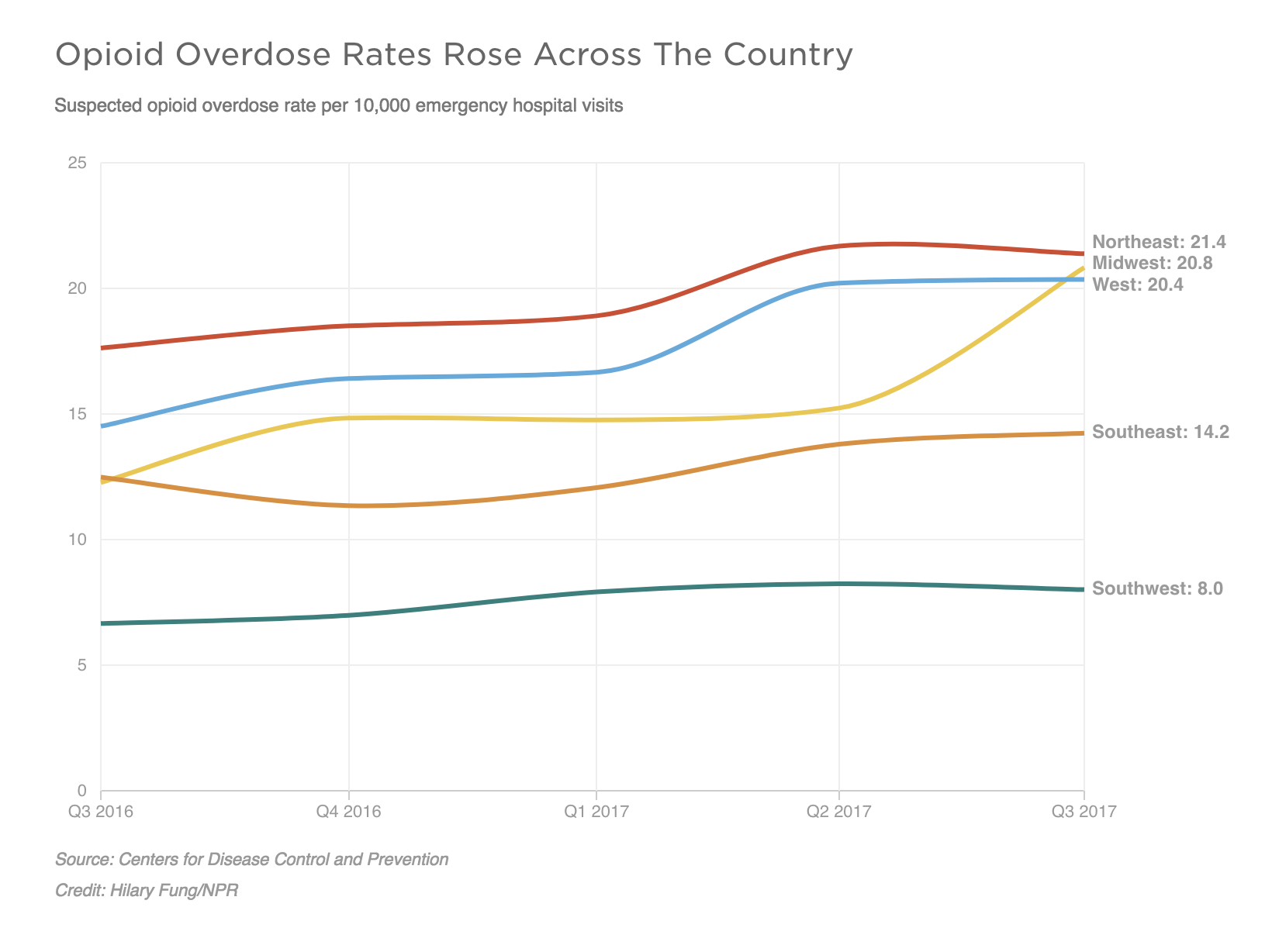Nobody likes to hear bad news, but sometimes it’s important because it can offer a reality check and alert people to a legitimate problem. Now we all know that the opioid crisis is a serious national concern and, unfortunately, statistics released this month revealed that is not getting any better.
According to NPR, overdoses from opioids jumped by an alarming 30 percent last year. The Centers for Disease Control and Prevention provided the data, which showed OD’s now in the high hundreds of thousands.
Breaking apart the stats by region, the report showed that our area of the western United States saw a sharp increase in overdoses toward the end of last year. A 40 percent jump to be exact, aligning us with the OD counts of America’s Midwest and Northeast regions.
As the chart below illustrates, our OD rate is now one of the highest in the U.S.
“We have an emergency on our hands,” acting CDC Director Anne Schuchat told the radio site. “The fast-moving opioid overdose epidemic continues and is accelerating. We saw, sadly, that in every region, in every age group of adults, in both men and women, overdoses from opioids are increasing”
The silver lining, for us optimists, is that most of these overdoses were not fatal. Thankfully, this data was based off emergency room data (91 million cases, to be exact) and the majority of those recorded were saved thanks tofast-acting medical professionals working all hours of the day.
Nevertheless, as the chart above shows, the Midwestern United States saw a 70 percent increase in opioid overdoses over that 12-month period. Wisconsin, the researchers revealed, accounted for the biggest bump in that region, with a 109 percent increase from 2016 to 2017.
One other interesting note is that these numbers don’t necessarily align with the opioid addiction stats over the same timeframe. The epidemic, it seems, isn’t moving at as fast of a pace, but the telling reveal is that the drugs themselves may now be more potent. In other words, the overdoses are rising because of stronger strains of painkillers.
“We think that the number of people addicted to opioids is more stable than this,” Schuchat added. “But the substances are more dangerous than five years ago. The margin of error for taking one of these substances is small now and people may not know what they have.”
Very true words, especially when you consider fentanyl and other “street versions” of opioids making their way into public consumption. Our advice is to keep up with all of these facts and reach out if you are close to someone battling this type of addiction.







